What are primal world beliefs?
Primal world beliefs, or “primals” for short, are extremely basic beliefs about the world as a whole, such as the belief the world is dangerous.
To learn your own primal world beliefs
Take the Survey
It’s easy to see how your perceptions of your immediate surroundings impact your behavior. For example, if you see a place as a dangerous battleground, you become alert and suspicious. Your body gets ready for fight or flight. If you see a place as a playground, you play. You get curious. You make friends.
What if you saw the whole world as a battleground?
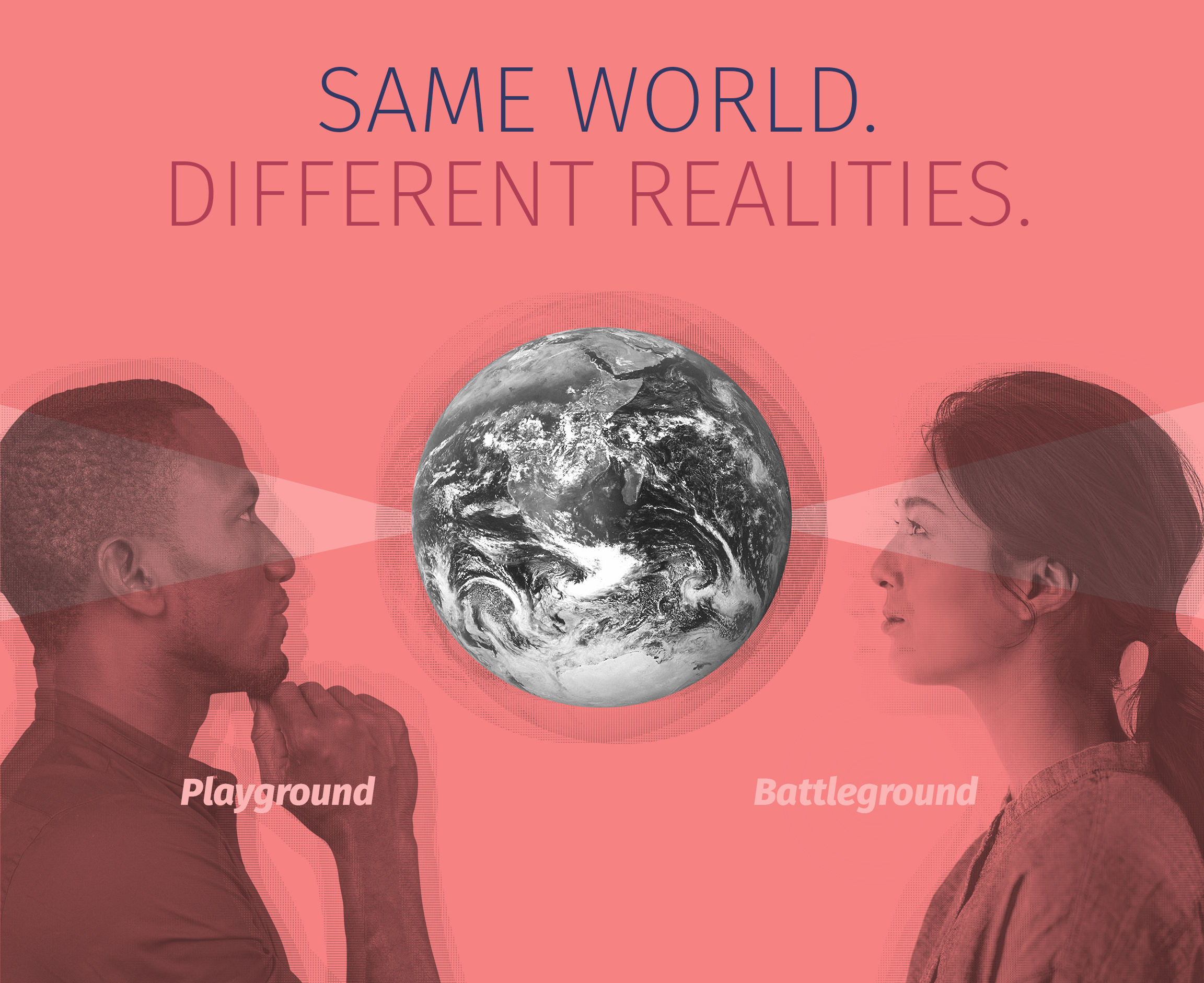
Just like beliefs about local contexts, people’s primal world beliefs might impact us too, but constantly—because people never leave the world. If so, then primals could influence depression, success, optimism, wellbeing, extraversion…honestly most life outcomes people care about.
To learn your own primal world beliefs
Take the Survey
These effects would be easy to overlook. After all, from the outside, what’s the difference between an optimist and a realist who just happens to believe the world is truly a good place? What’s the difference between a temperamentally fearful person and a temperamentally average person who happens to see the world as dangerous? Outsiders see the behavior, but not the thinking behind it.

Psychologists have studied a few primal world beliefs off and on for decades, but a comprehensive effort to identify all major primals did not start until 2013, when Dr. Jer Clifton put together an initial advisory team. The whole effort took five years and involved 70 researchers, including some of the world’s best like Dr. Martin Seligman and Dr. Crystal Park.
To learn your own primal world beliefs
Take the Survey
The research team mined multiple data sources, including hundreds of the most influential texts in human history, tens of thousands of tweets, and hundreds of the most used adjectives. They statistically analyzed patterns in the data, confirming results in bigger samples, and publishing everything in 2019 in the most respected empirical journal for this sort of research.
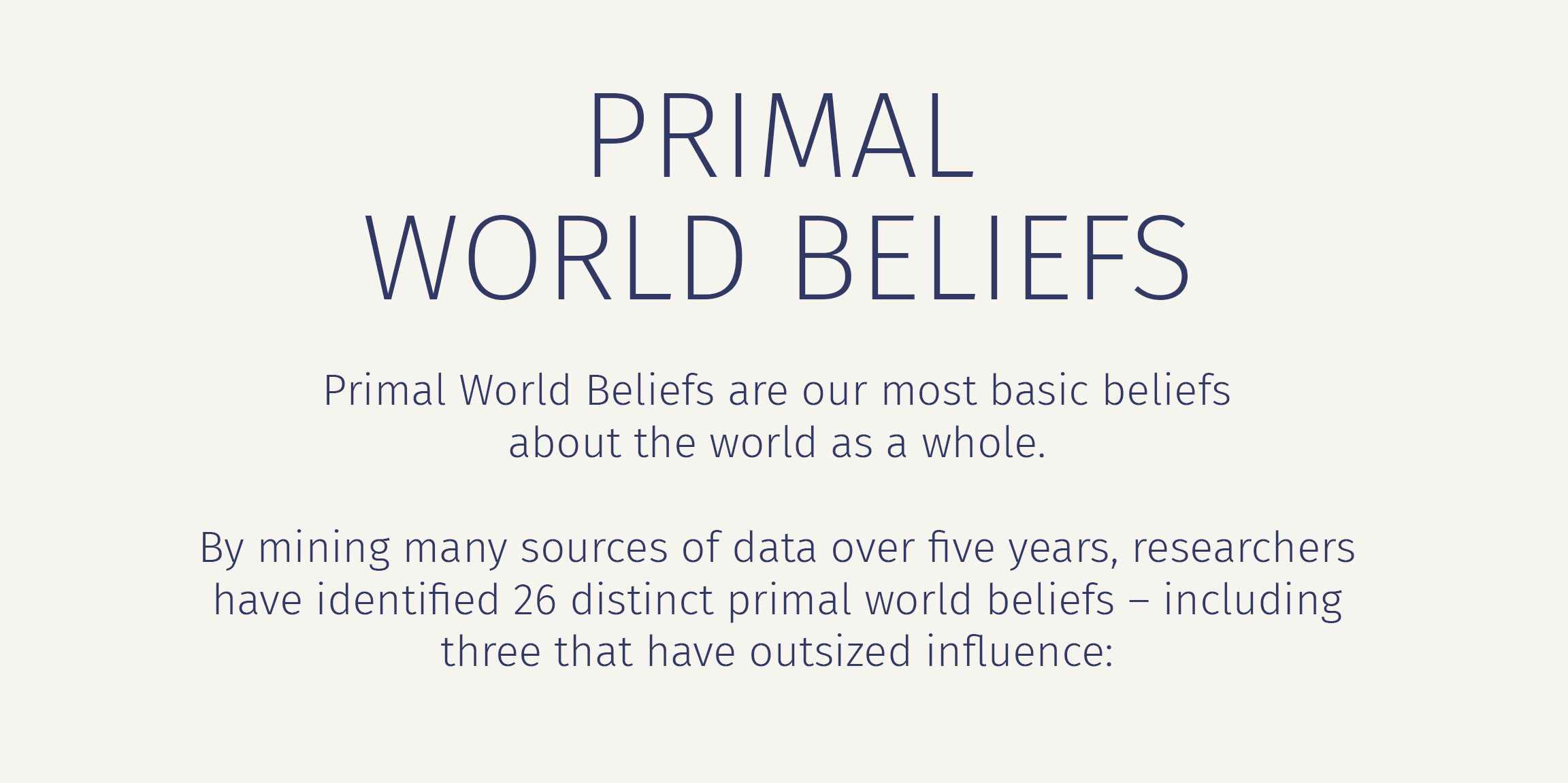
The results showed that study subjects (the first samples examined were Americans) varied when it comes to three major beliefs about the world: the beliefs the world is Safe, Enticing, and Alive. To be clear, researchers did not come up with these beliefs. Instead, they used statistics to uncover replicable patterns of belief in data.
Much more research is underway to see if below findings replicate across different cultures and groups. So far, data patterns appear fairly similar.
Safe World Belief

Those low on Safe world belief see the world as dangerous. They don’t necessarily feel more scared or threatened in response to dangers, they are just of the honest opinion that there’s a lot more danger out there than the rest of us suspect. In contrast, those who score high on Safe see really dangerous threats as few and far between. Thus, they feel that constant vigilance is neurotic, risk is not that risky, and, in general, people should calm down.
To learn your own primal world beliefs
Take the Survey
Enticing World Belief
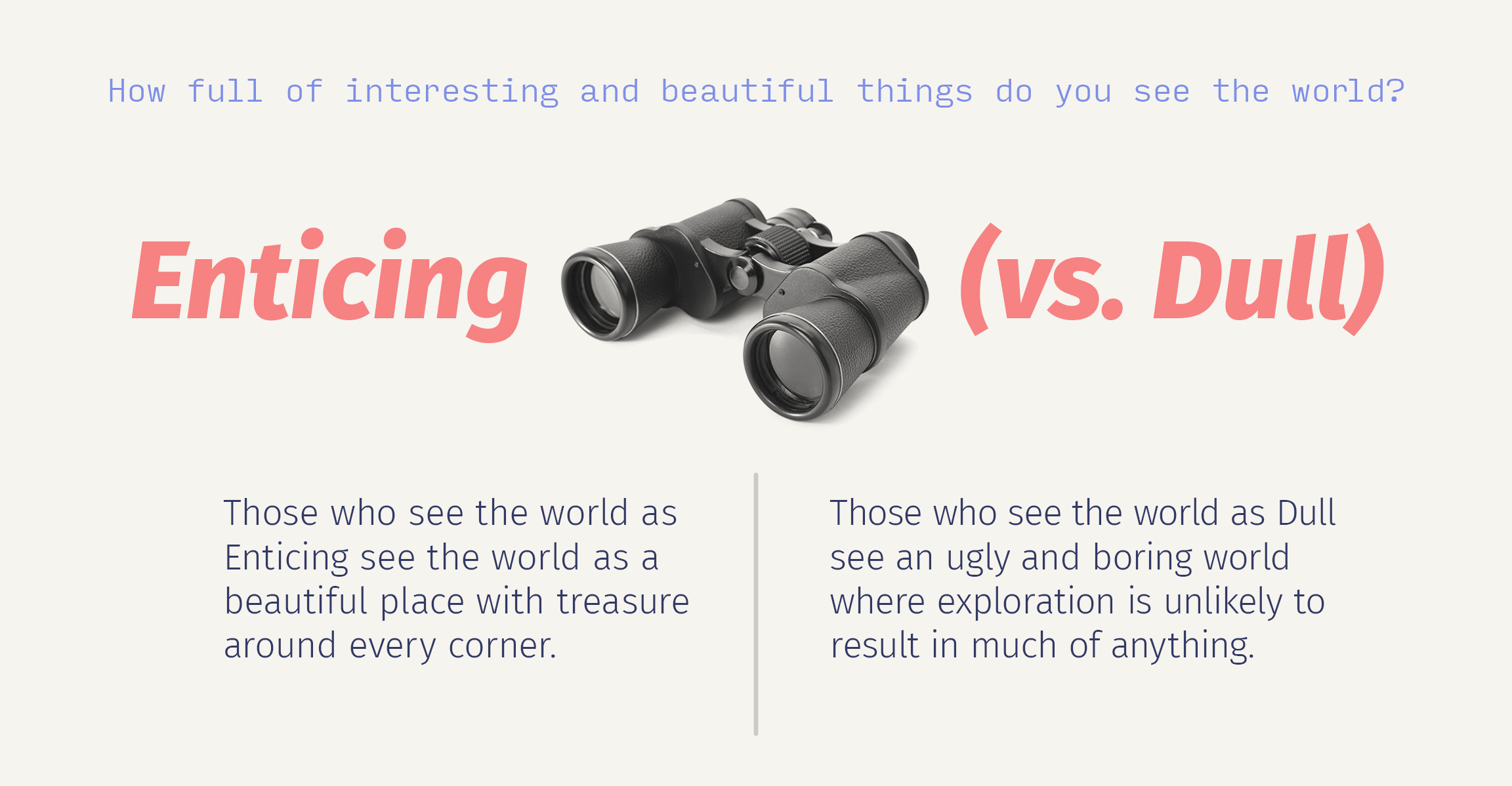
Those low on Enticing world belief see the world as dull. In their view, truly beautiful and fascinating things are rare. Those high on Enticing are of the opinion that treasure is around every corner, in every person, under every rock, and that beauty permeates everything. Therefore, exploration and appreciation are not naïve. It’s simply the rational way to live.
Alive World Belief

Those low on Alive world belief see the world as a machine with no awareness or intentions. Since the universe never sends messages, it makes no sense to try and listen for any. Just as machine parts are interchangeable, so too are people: the world doesn’t need you for anything special. Those high on Alive think life is a relationship with an active universe that animates events, communicates with us, and has a role for each of us to play. Though religious people tend to see the world as Alive, plenty of non-religious people do, too.
To learn your own primal world beliefs
Take the Survey
While those three primal world beliefs are the most important, researchers have now identified a total of 26 primal world beliefs—way more than researchers knew about. Most cluster under Safe, Enticing, or Alive, which in turn cluster into the overall belief the world is Good.
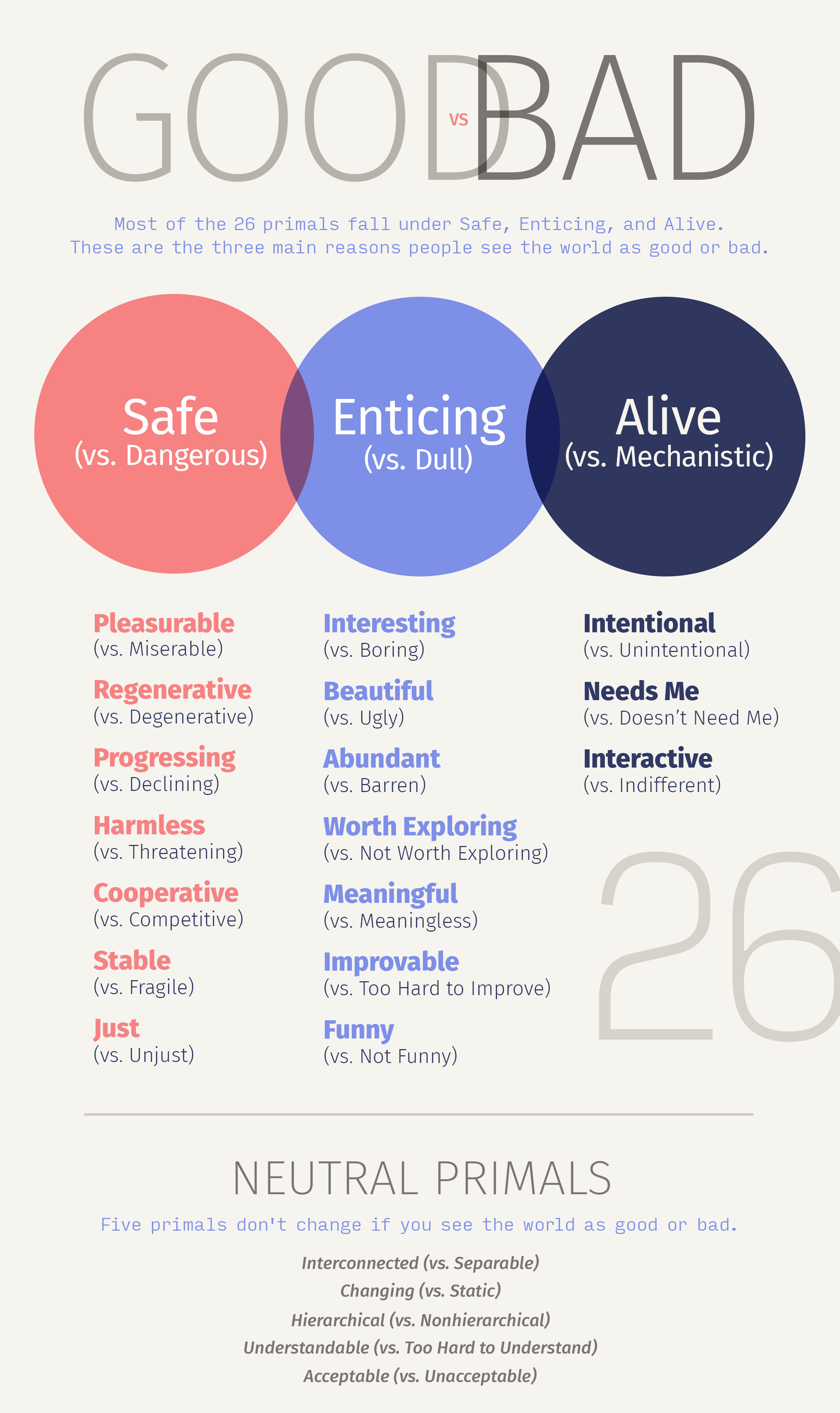
Subsequent research has confirmed that, in general, all 26 primal world beliefs are:
- Stable: Primals can change but in practice they are as stable across time as personality traits like extraversion. This means many people likely spend decades holding the same world beliefs.
- Hidden: Primals are not that related to demographic factors. For example, people who are rich do not see the world as more abundant than people who are poor. Men don’t see the world as safer than women. This means you can’t tell someone’s primals by looking at them.
- Correlated: Primals are correlated to how we live our lives and our mental health. For example, Safe world belief is very strongly correlated to trust and less depression. Enticing is very strongly correlated to curiosity, gratitude, and happiness. Alive is strongly correlated to spirituality and having purpose in life. This means that, across a wide range of behaviors, humans act rationally given their primals.
Much of what we become in life—much joy and suffering—may depend on the sort of world we think this is.
— Conclusion of the 2019 foundational primals research article
If primal world beliefs function like similar beliefs are known to function, then each primal should have cascading effects across behaviors and life outcomes. However, conclusive experimental research is lacking, so researchers do not yet know what causes what.
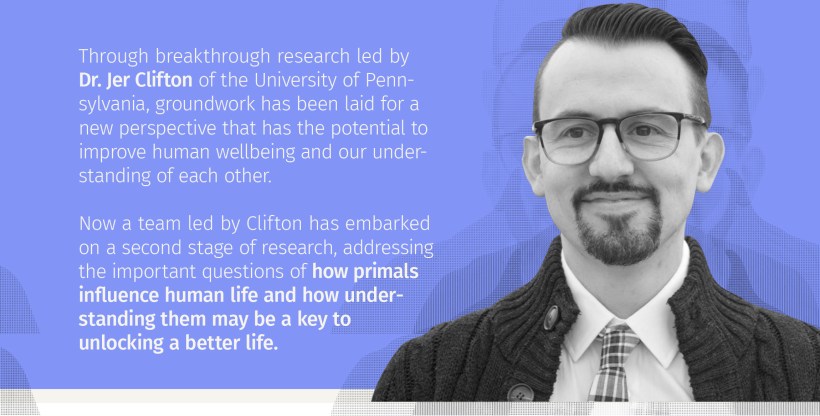
Now, dozens of top researchers around the world are studying primal world beliefs. A tidal wave of research is coming. And we’ve established the Primals Project at the University of Pennsylvania to foster research on the origins and impact of primals.
If this interests you, take the primals survey to find out what your own primal world beliefs are and sign up for research updates.
To learn your own primal world beliefs
Take the Survey
Some of the above text appeared in a Psychology Today article by Dr. Clifton, and has been repurposed with permission.